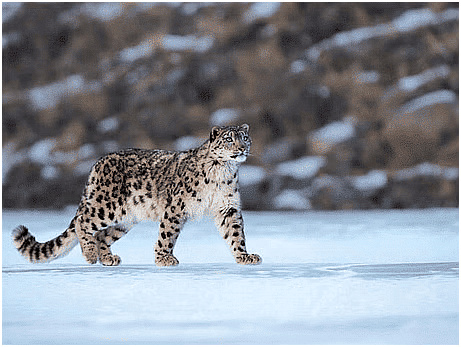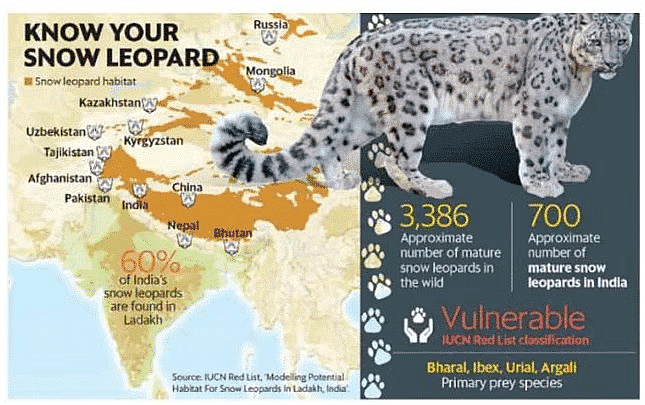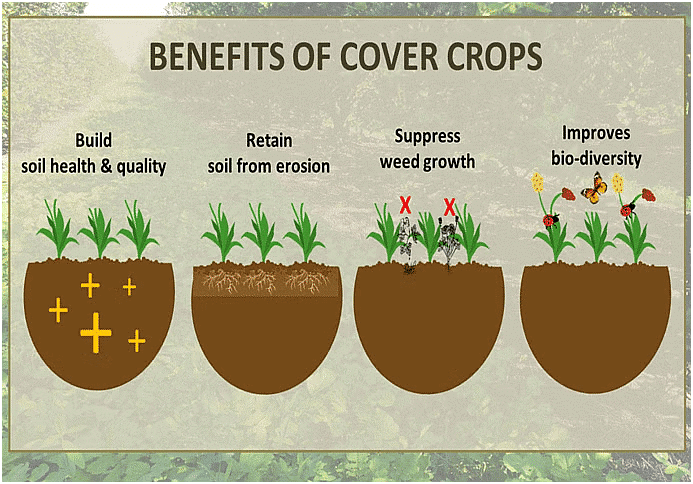Environment and Ecology: January 2024 Current Affairs | General Test Preparation for CUET UG - CUET Commerce PDF Download
Project Tiger
Context
Over the years, the tiger conservation effort has progressed, leading to the establishment of 55 Tiger Reserves and the enactment of significant wildlife protection legislation.
- However, conflicts within Tiger Reserves between forest officials and forest communities have escalated due to infringements of the Wildlife (Protection) Act, 1972, and the Forest Rights Act, 2006.
- The Ministry of Environment, Forest, and Climate Change has announced the integration of the two flagship programs, Project Tiger and Project Elephant, into a unified initiative known as Project Tiger and Elephant (PTE).
What are the Shortcomings in Tiger Conservation?
- The Wildlife Protection (Amendment) Act, 2006 did not explicitly forbid the diversion of tiger habitats for development projects and allowed wildlife to be killed as a last resort if they posed a threat to human lives.
- The government intended to formalize the Forest Rights Act (FRA) Rules in 2009 and put the Act into action. However, in November 2007, the National Tiger Conservation Authority (NTCA) issued an order instructing Chief Wildlife Wardens to propose delineation of Critical Tiger Habitats (CTHs) within 13 days, each spanning an area of 800-1,000 sq. km.
- Consequently, the government notified 26 Tiger Reserves across 12 states under Section 38 (V) of the Wildlife Protection Act (WLPA) without adhering to its provisions. Notably, the Critical Tiger Habitats (CTHs) in Similipal, Odisha lacked a Buffer Area until 2012 when they were incorporated following a directive from the Supreme Court.
- The Court gave the National Tiger Conservation Authority (NTCA) a three-month ultimatum for this inclusion. The Tiger Task Force concluded that the prevailing strategy of using guns, guards, and fences was ineffective in safeguarding tigers. Moreover, the escalating conflict between forest/wildlife officials and those residing in tiger habitats was deemed a potential disaster.
What are Initiatives Taken for Tiger Conservation?
Project Tiger
- About
- Project Tiger is a wildlife conservation initiative in India that was launched in 1973.
- The primary objective of Project Tiger is to ensure the survival and maintenance of the tiger population in their natural habitats by creating dedicated Tiger Reserves.
- Starting with only nine reserves covering 9,115 sq. km, the project marked a paradigm shift in wildlife conservation efforts.
- Method of Tiger Census
- The unreliable pug-mark method of the first tiger census in 1972 gave way to more accurate techniques like the camera-trap method.
- Growth Rate in Tiger Population
- The first tiger census, in 1972, used the unreliable pug-mark method to count 1,827 tigers.
- As of 2022, the tiger population is estimated at 3,167-3,925, showcasing a growth rate of 6.1% per year.
- India is now home to three-quarters of the world’s tigers.
- Tiger Reserve:
- In 1973, Project Tiger began with nine reserves covering 9,115 sq. km. By 2018, it had grown to 55 reserves in different states, totalling 78,135.956 sq. km or 2.38% of India's land area.
- Wildlife (Protection) Act,1972
- The Wild Life (Protection) Act, 1972 provides a legal framework for the protection of various species of wild animals and plants, management of their habitats, regulation, and control of trade in wild animals, plants, and products made from them.
- The Wildlife (Protection) Act (WLPA), 1972 laid the groundwork for tiger conservation. It established National Parks and Wildlife Sanctuaries, segregating rights in favour of State governments and introducing the concept of Critical Tiger Habitats (CTH).
- The amendment to WLPA in 2006 led to the creation of the National Tiger Conservation Authority (NTCA) and a comprehensive tiger conservation plan.
- This marked a departure from the earlier fortress conservation approach, acknowledging the inseparable link between tiger protection, forest conservation, and the well-being of local communities.
- Tiger Task Force
- In 2005, the formation of the Tiger Task Force, prompted by concerns about tiger conservation, emphasized the necessity for a reassessment. The task force pointed out flaws in the existing strategy that heavily depended on weapons, guards, and fences.
What is the Recognition of Forest Rights Act, 2006?
- The enactment of the Scheduled Tribes and Other Traditional Forest Dwellers (Recognition of Forest Rights) Act, 2006 recognized the customary and traditional forest rights in communities.
- This empowered Gram Sabhas to democratically manage forest resources and biodiversity within their boundaries.
- Critical Wildlife Habitat (CWH):
- The Forest Rights Act (FRA) introduced a 'Critical Wildlife Habitat' (CWH), similar to the Critical Tiger Habitat (CTH) under the Wildlife Protection Act (WLPA).
- However, a key difference was that once a CWH was notified, it couldn't be redirected for non-forestry purposes. This particular clause was insisted upon by Adivasi movements during negotiations.
- Critical Tiger Habitats (CTH) cover 42,913.37 sq. km, or 26% of the area under National Parks and Wildlife Sanctuaries.
- The Gram Sabhas were given the authority to safeguard, preserve, and oversee the forest, wildlife, and biodiversity within their customary boundaries.
Conclusion
The journey from Project Tiger in 1973 to creation of the NTCA by 2006 amendments reflects India's commitment to tiger conservation and sustainable coexistence. The integration of community empowerment, recognition of forest rights, and a nuanced approach to wildlife protection showcase a holistic paradigm in wildlife conservation.
Natural Pathogenic Fungi to Save Eucalyptus Forests

Scientists have found a natural remedy to protect eucalyptus forest plantations from a pest, eucalyptus snout beetle, which is known to cause serious damage to eucalypts.
About Eucalyptus Snout Beetle
- The leaf-feeding beetle is a significant defoliator of eucalyptus trees.
- It is also referred to as the eucalyptus weevil.
- Originating in Australia, this pest is found in numerous countries worldwide where eucalyptus trees are cultivated.
- The beetle consumes leaves, buds, and shoots, leading to stunted growth and defoliation, resulting in substantial losses.
- Due to its extensive flight capability, the pest can cause damage over large areas and spreads through the transportation of forest products.
- The primary method of controlling this pest involves the use of microwasps from the Anaphes spp, which can be costly.
- Consequently, a team of scientists embarked on a quest to discover naturally occurring pathogenic fungi as an alternative solution to combat the problem.
New Research
- The scientists collected the fungi from naturally infected beetles, the pathogen can better adapt to the environmental conditions, making it efficient to control beetles in forest populations.
- The findings of the study showed that Beauveria bassiana was highly effective both by contact and ingestion, with a mortality rate of 100 per cent.
- The fungi could be used to develop a bio-pesticide for sustainable forestry using integrated pest management.
- The fungi could also be used in other countries where the insect is causing severe damage.
Darjeeling Zoo’s Conservation Breeding Programme for Snow Leopards
Context
The conservation breeding program at Darjeeling zoo commenced almost four decades ago and has since become home to the highest number of snow leopards in captivity globally.
Snow Leopard

- Scientific name of Snow Leopard is Panthera uncia
- They are also called the ‘ghosts of the mountains’.
- The snow leopard is the state animal of Himachal Pradesh.
- The snow leopard’s fur is white to brown and has black spots around its head and neck.
- It preys on Himalayan Blue Sheep, Himalayan Tahr, Tibetan Argali and Himalayan Ibex etc.
- Snow leopards are sparsely distributed in 12 countries of Central Asia, from southern Russia to the Tibetan Plateau, including Mongolia, China, Afghanistan, Pakistan, India and Nepal.
- In India, it is found in Jammu and Kashmir, Ladakh, Uttarakhand, Arunachal Pradesh, Sikkim and Himachal Pradesh.
- Accommodation Type: Forests, shrubs, grasslands, rocky areas

Conservation Status
- Appendix I: Convention on International Trade in Endangered Species (CITES)
- Schedule I: Wildlife (Protection) Act 1972
- IUCN Status: – ‘Vulnerable’
National and International Efforts for the Protection of Snow Leopards
- Indian Efforts:
- Project Snow Leopard (PSL): The project was launched in 2009 to promote an inclusive and participatory approach to the conservation of snow leopards and their habitat.
- International Efforts:
- On the Bishkek Declaration for the conservation of snow leopards by 12 ‘Snow Leopard’ Range Countries (Afghanistan, Bhutan, China, India, Kazakhstan, Kyrgyzstan, Mongolia, Nepal, Pakistan, Russia, Tajikistan and Uzbekistan) in 2013
- During this, the ‘Global Snow Leopard and Ecosystem Protection’ (GSLEP) program was also launched. India is a signatory to the programme.
About Darjeeling Zoo
- The official name of Darjeeling Zoo is Padmaja Naidu Himalayan Zoological Park (PNHZ), situated in the town of Darjeeling, West Bengal, India.
- Renowned for its pioneering efforts in the conservation breeding of endangered Eastern Himalayan Species, the zoo initiated its first ex-situ conservation breeding program in 1986 with the Snow Leopard conservation breeding project.
- Subsequently, the Red Panda project was launched in 1990. Notably, in 2003-04, the park successfully released four female Red Pandas into the Singalila National Park, marking the world's first reintroduction program for the species.
- The park encompasses three conservation breeding centers, namely the Old Conservation Breeding Center, the Conservation Breeding Center at Topkeydara, and the Satellite Zoo at Dowhill. Since 2009, the zoo has been a member of the World Association of Zoos and Aquariums (WAZA) and the Zoological Information Management System (ZIMS).
- In recognition of its remarkable efforts in both in-situ and ex-situ conservation, the zoo was honored with the "Royal Bank of Scotland Earth Hero Award" in 2014. Furthermore, in 2022, the Central Zoo Authority of India (CZA) ranked PNHZ Park first in all categories among all zoos in the country.
World Association of Zoos and Aquarium
- WAZA is the global alliance of regional associations, national federations, zoos, and aquariums, dedicated to the care and conservation of animals and their habitats around the world.
- WAZA has formed partnerships with leading international conservation organizations, committing its members to tackle global issues such as the illegal wildlife trade, coral‑reef restoration, marine litter, sustainable palm oil and climate change.
- It was founded in 1935.
Central Zoo Authority of India
- It was established as a statutory body under the Ministry of Environment & Forest in the year 1992.
- It was established under the Wildlife (Protection) Act 1972.
- The main objective is to complement and strengthen the national efforts in conservation of the rich biodiversity of India, particularly the fauna as per the National Zoo Policy of 1988.
- Enforcing the minimum standards and norms for upkeep and healthcare of animals in Indian Zoos and to control the mushrooming of unplanned and ill-conceived zoos.
Varied Progress in Clean Air Target
Context
A recent study conducted by Climate Trends and Respirer Living Sciences has unveiled that most cities are falling short of India’s National Clean Air Programme (NCAP) clean air objectives.
What are the Key Highlights of the Study?
- PM2.5 Reduction Disparities:
- Among 49 cities with consistent PM2.5 data over five years, only 27 cities showed a decline in PM2.5 levels, while merely four cities met or surpassed the targeted decline as per National Clean Air Campaign (NCAP) Goals.
- The NCAP's goal is to reduce average particulate matter (PM) concentrations by 40% by 2026 in 131 cities.
- Initially aimed for a 20-40% reduction by 2024, the target was later extended to 2026.
- Mixed Progress Across Cities:
- While some cities like Varanasi, Agra, and Jodhpur exhibited significant reductions in PM2.5 levels, others, including Delhi, reported marginal declines (only 5.9%) or even increased pollution loads.
- Varanasi showed the most substantial reduction with a 72% average decrease in PM2.5 levels and a 69% reduction in PM10 levels from 2019 to 2023.
- Regional Vulnerabilities:
- The Indo-Gangetic Plain (IGP) remains highly vulnerable to elevated particulate matter concentrations, hosting around 18 of the top 20 most polluted cities for PM2.5.
- Only Guwahati and Rourkela, outside the IGP, were among the 20 most polluted cities for PM 2.5.
- Monitoring Challenges:
- The availability and distribution of continuous ambient air quality monitors significantly influence annual pollutant concentrations.
- However, many Indian cities lack an adequate number of such monitoring stations.
- While cities such as Mumbai and Delhi have several such stations, most Indian cities have only a handful.
- Only four of the 92 cities have more than 10 such stations.
- Factors Impacting Pollution:
- Variations in pollution levels can be attributed to geographical locations, diverse emission sources, meteorological influences, and the interplay between emissions and Meteorology, requiring further investigation.
What is the National Clean Air Programme?
- It was launched by the Ministry of Environment, Forests and Climate Change (MoEFCC) in January 2019.
- It is the first-ever effort in the country to frame a national framework for air quality management with a time-bound reduction target.
- The NCAP's goal is to reduce average particulate matter (PM) concentrations by 40% by 2026 in 131 cities. Initially aimed for a 20-40% reduction by 2024, the target was later extended to 2026
- It covers 131 non-attainment cities which were identified by the Central Pollution Control Board (CPCB).
- Non-attainment cities are those that have fallen short of the National Ambient Air Quality Standards (NAAQS) for over five years.
- NAAQs are the standards for ambient air quality with reference to various identified pollutant notified by the CPCB under the Air (Prevention and Control of Pollution) Act, 1981.
- List of pollutants under NAAQS: PM10, PM2.5, SO2, NO2, CO, NH3, Ozone, Lead, Benzene, Benzo-Pyrene, Arsenic and Nickel.
- PRANA ( Portal for Regulation of Air-pollution in Non-Attainment cities), is a portal for monitoring of implementation of NCAP.
Northeast African Cheetah
A group of experts have appealed to the International Union for Conservation of Nature (IUCN) to reclassify the status of the Northeast African Cheetah (Acinonyx jubatus soemmeringii) to ‘endangered’ from ‘vulnerable’.
About Northeast African Cheetah
- It is found in the Horn of Africa.
- It is also known as the Sudan cheetah. This subspecies is more closely related to the Southern African cheetah than to Saharan cheetah populations.
- The cheetah’s long tail helps it keep its balance when changing direction mid-chase. Cheetahs can make even 90-degree turns with ease while sprinting.
- Appearance: Like it’s relative to the south in East Africa, the Northeast African cheetah is fairly large. Physically, it most resembles the East African cheetah
- Distribution: Contemporary records are known in South Sudan and Ethiopia. These animals live in wide open lands, grasslands, semi-arid areas, and other open habitats where prey is abundant such as in the East Sudanian Savanna.
- Threat: The subspecies’ cubs are being heavily trafficked across the Red Sea to Arab countries like Saudi Arabia, the United Arab Emirates and Yemen.
Sustainable Agriculture
Context
The recent Indigenous Seed Festival in West Bengal highlighted farmers' notable endeavor to preserve native seed varieties and exchange traditional wisdom, illustrating a substantial transition towards Sustainable Agriculture Practices. This festival is a component of ActionAid’s climate justice campaign, fostering discussions among farmers on topics such as climate change, organic farming, and access to indigenous seeds. ActionAid's emphasis on climate resilience and sustainable agriculture extends across 22 Indian states. The organization aims to establish community-based seed banks throughout West Bengal.
What is Sustainable Agriculture?
- About:
- Sustainable agriculture refers to a holistic approach to farming and food production that aims to meet the current needs for food and fiber while ensuring the long-term viability of agricultural systems and preserving natural resources for future generations.
- It encompasses various practices and principles such as Crop Switching, Organic Farming, Community Supporting Agriculture etc, that focus on environmental stewardship, economic profitability, and social equity.
- Benefits:
- Environmental Conservation: Practices that minimize the impact on ecosystems, soil, water, and biodiversity. This involves using methods that reduce soil erosion, conserve water, and avoid or minimize the use of synthetic fertilizers and pesticides.
- Techniques like crop rotation, cover cropping, and agroforestry are employed to maintain soil fertility and health.

- Economic Viability: Ensuring that agricultural practices are economically feasible for farmers, enabling them to earn a fair income while sustaining their livelihoods.
- This involves strategies that enhance productivity, reduce production costs, and open up markets for sustainably produced goods.
- Social Equity: Fostering fair and equitable relationships among farmers, consumers, and other stakeholders in the food system.
- This includes ensuring fair wages and working conditions for agricultural laborers, supporting rural communities, and promoting access to healthy and nutritious food for all.
- Resilience to Climate Change: Building agricultural systems that are resilient to climate variability and change. Sustainable agriculture practices aim to adapt to changing climatic conditions, mitigate greenhouse gas emissions, and contribute to overall climate resilience.
- Biodiversity Preservation: Supporting diverse ecosystems and genetic diversity within crops and livestock. Maintaining biodiversity is critical for resilience against pests, diseases, and environmental changes. This involves preserving heirloom and indigenous crop varieties, as well as promoting diverse landscapes that support wildlife and pollinators.
What are the Limitations of Sustainable Agriculture in India?
- High Labor Demand: Sustainable agriculture often requires more manual labor than conventional agriculture, as it involves practices such as Crop Rotation, Intercropping, Organic Fertilization, and pest management.
- This can increase the cost of production and reduce the profitability of farmers.
- Time Consumption: Sustainable agriculture also takes more time to implement and show results than conventional agriculture, as it relies on natural processes and gradual improvements.
- This can discourage farmers who need immediate returns and face uncertainties such as weather, market, and policy changes.
- Limited Production Potential: Sustainable agriculture may not be able to meet the growing demand for food in India, as it tends to have lower yields than conventional agriculture, especially in the short term.
- This can pose a challenge to Food Security and Poverty Alleviation, especially in a country with a large and increasing population.
- The recent Sri Lankan crisis was triggered by the policy of shifting to Organic farming.
- Rice, Sri Lanka's dietary staple, saw average yields slashed by some 30%.
- High Capital Cost: Sustainable agriculture may require high initial investment in infrastructure, equipment, and inputs, such as Irrigation systems, micro-irrigation devices, organic fertilizers, and seeds.
- This can be a barrier for small and marginal farmers who lack access to credit and Subsidies.
- Storage and Marketing Challenges: Sustainable agriculture may face storage and marketing challenges in India, as it produces perishable and heterogeneous products that require proper handling and packaging.
- This can increase post-harvest losses and reduce the marketability of the produce, especially in the absence of adequate certification and labeling systems that ensure quality and traceability.
Way Forward
- Providing financial incentives for farmers to adopt sustainable practices, such as direct payments, subsidies for organic inputs, and crop insurance.
- Investing in research and development of sustainable agricultural technologies and practices.
- Strengthening agricultural extension services to provide farmers with training and information on sustainable agriculture.
- Improving market access for sustainably produced food through better infrastructure, marketing support, and consumer awareness campaigns.
- Addressing land fragmentation through land consolidation programs and promoting joint farming initiatives.
- Strengthening environmental regulations and their enforcement.
- Empowering women in agriculture through land ownership rights, access to credit and resources, and participation in decision-making processes.
Wetland City Accreditation
The Ministry of Environment, Forest, and Climate Change recently nominated three cities from India—Indore (Madhya Pradesh), Bhopal (Madhya Pradesh), and Udaipur (Rajasthan)—for Wetland City Accreditation (WCA) under the Ramsar Convention on Wetlands.
About Wetland City Accreditation
- The Ramsar Convention during COP12 held in the year 2015 approved a voluntary Wetland City Accreditation system under Resolution XII.10
- It recognizes cities which have taken exceptional steps to safeguard their urban wetlands.
- It also recognizes the importance of wetlands in urban and peri-urban environments and to take appropriate measures to conserve and protect these wetlands.
- This voluntary scheme provides an opportunity for cities that value their natural or human-made wetlands to gain international recognition and positive publicity for their efforts.
- This scheme aims to further promote the conservation and wise use of urban and peri-urban wetlands, as well as sustainable socio-economic benefits for local populations.
- To be formally accredited, a candidate for WCA should satisfy the standards used to implement each of the six international criteria mentioned in Operational Guidance for WCA of the Ramsar Convention on Wetlands.
- Since Ramsar COP13, 43 cities from 17 countries have been officially recognized as “Wetland Cities”.
The three nominated cities include
- Indore: Founded by Holkars. Sirpur Lake, a Ramsar Site in the city has been recognised as an important site for water bird congregation and is being developed as a Bird Sanctuary. A strong network of wetland mitras is engaged in bird conservation and sensitising the local community to protect Sarus Crane.
- Bhopal: Bhoj Wetland, Ramsar Site is the city’s lifeline, equipped with the world-class wetlands interpretation centre, Jal Tarang. Additionally, the Bhopal Municipal Corporation has a dedicated Lake Conservation Cell.
- Udaipur: Located in Rajasthan, the city is surrounded by five major wetlands, namely, Pichola, Fateh Sagar, Rang Sagar, Swaroop Sagar, and Doodh Talai. These wetlands are an integral part of the city’s culture and identity, help maintain the city’s microclimate, and provide a buffer from extreme events.
Buxa Tiger Reserve
Recently, a Royal Bengal tiger was spotted in Buxa National Park in West Bengal. The last sighting of a tiger in the park occurred 23 years ago, on December 12, 2021.
Potential Reasons for Tiger’s Comeback
- Increase in Prey Base of Tigers
- Expansion of the Grassland
- Controlling Human Interaction
- Initiatives to curb infiltration and trespassing
About Buxa Tiger Reserve
- Location: Buxa Tiger Reserve is located in North Bengal’s Alipurduar district. Its Northern boundary runs along the border with Bhutan.
- Establishment: It was created in 1983 as the 15th Tiger Reserve of India and was declared as a National Park in January 1992.
- In 2018, the “Tiger augmentation and monitoring project” was introduced in Buxa by the state forest department, Wildlife Institute of India and the National Tiger Conservation Authority.
- Main Flowing Rivers: Sankosh, Raidak, Jayanti, Churnia, Turturi, Phashkhawa, Dima and Nonani.
- Types of Vegetation: Moist Tropical Forest
- Few Available Species: Indian Tiger (Panthera tigris tigris), Leopard (Panthera pardus), Clouded Leopard (Neofelis nebulosa), Jungle Cat (Felis chaus) etc.
Conservation Status of Tiger
- Indian Wildlife (Protection) Act, 1972: Schedule I
- International Union for Conservation of Nature (IUCN) Red List: Endangered
- Convention on International Trade in Endangered Species of Wild Fauna and Flora (CITES): Appendix I.
Biodiversity Credits
Context
Biodiversity Credits, proposed as a financial mechanism, aim to support initiatives aligned with the ambitious targets of the Kunming-Montreal Global Biodiversity Framework (KMGBF). Established during the 15th Conference of Parties (CoP15) of the Convention on Biological Diversity (CBD), the KMGBF outlines comprehensive goals for biodiversity conservation, sustainable use, and fair benefit sharing.
Relevance:
- GS III: Environment and Ecology
Dimensions of the Article:
- What is Biodiversity Credit?
- Biodiversity Credit Alliance
- Implementation and Initiatives
What is Biodiversity Credit?
- Biodiversity credits serve as a financial tool to generate funds dedicated to conserving, restoring, and sustainably utilizing areas abundant in biodiversity.
- Similar to Carbon Credits, they focus specifically on biodiversity preservation instead of mitigating adverse environmental impacts.
- The primary objective is to attract private investments that align with international agreements such as the Kunming-Montreal Global Biodiversity Framework (KMGBF) under the Convention on Biological Diversity (CBD).
Biodiversity Credit Alliance
- Launched during the CoP15 of CBD, the Biodiversity Credit Alliance aims to advocate for biodiversity credits.
- Efforts to promote them included discussions at CoP28 of the UNFCCC in December 2023.
- The alliance seeks to mobilize support and raise awareness among diverse stakeholders, including governments, non-profits, and private enterprises.
Implementation and Initiatives
- Ocean Conservation Commitments (OCCs): Launched in September 2023, OCCs are linked to Niue’s Moana Mahu Marine Protected Area, covering 127,000 square kilometers.
- Available for purchase, OCCs represent commitments to support conservation efforts for 20 years.
- Priced at USD 148 per OCC, attracting investments from entities like the Blue Nature Alliance, Conservation International, and private donors.
- Wallacea Trust: A UK-based organization focusing on biodiversity and climate research, making substantial financial commitments equivalent to 5 million biodiversity credits.
- Indicates a notable interest from research-oriented entities in utilizing biodiversity credits for conservation.
Challenges and Uncertainties
- Despite their potential, the success of biodiversity credits faces uncertainties, including regulatory frameworks, ensuring fair pricing structures, and avoiding corporate interests overshadowing genuine biodiversity conservation.
Pelagic Birds
Context
Bird enthusiasts were able to document rare ‘pelagic’ birds throughout 2023 just off the Karnataka coast. Besides pelagic birds, Karnataka has drawn attention to land-based species, with the New Mangalore Port (NMP) transforming into a green port, fostering avian diversity.

What are the Key Facts About Pelagic Birds?
- About:
- Pelagic birds are birds that spend a large portion of their lives on the open ocean.
- They can be found thousands of miles offshore but can get blown onto land during high winds and storms. The only other time they come inland is to breed.
- Features:
- These birds vary greatly in size and description from each other, but they all live on open water, dive for food, and are excellent swimmers.
- Pelagic birds possess remarkably long, slender wings enabling extended flights without rest.
- Some can stay airborne for days or weeks, even sleeping during flight.
- These birds feature a unique salt gland that extracts salt from seawater, preventing its accumulation to toxic levels.
- They feed on planktonic crustaceans (related to shrimp and crabs), and squid and hunt fish far from land.
- Examples:
- One of the better-known pelagic birds is the Laysan Albatross, which breeds almost exclusively on the Hawaiian islands but roams the nutrient-rich waters of the Pacific to feed.
- Pelagic birds also include Sooty Shearwater, Brown Skua, Brown Booby, Streaked Shearwater and Masked Booby, Pomarine Skua, Arctic skua, Long-tailed skua, Swinhoes storm-petrel, Wilson’s storm-petrel, and other oceanic wanderers.
- Threats:
- Human activities pose threats to birds, including those in remote open oceans.
- Seabirds, globally, face significant threats, with issues arising both from terrestrial nesting grounds and oceanic factors.
- Oil spills, climate change-induced alterations to prey availability, and fishing nets contribute to the challenges.
- The decrease in pelagic bird density is attributed to a decline in fish populations, possibly influenced by factors such as sea rains pushing fish to deeper waters.
- Plastic pollution is a major concern for pelagic birds, as plastics persist in oceans, breaking into smaller pieces.
- Birds often mistake plastic fragments for prey, leading to ingestion and associated health risks.
|
164 videos|800 docs|1156 tests
|
FAQs on Environment and Ecology: January 2024 Current Affairs - General Test Preparation for CUET UG - CUET Commerce
| 1. What is Project Tiger and how does it aim to conserve tiger populations in India? |  |
| 2. How does the Darjeeling Zoo’s Conservation Breeding Programme for Snow Leopards contribute to the conservation of this endangered species? |  |
| 3. What are some of the key strategies for achieving sustainable agriculture and why is it important for environmental conservation? |  |
| 4. What is the significance of Wetland City Accreditation and how does it help in the conservation of wetlands? |  |
| 5. How do Biodiversity Credits work and how do they incentivize conservation efforts? |  |





















